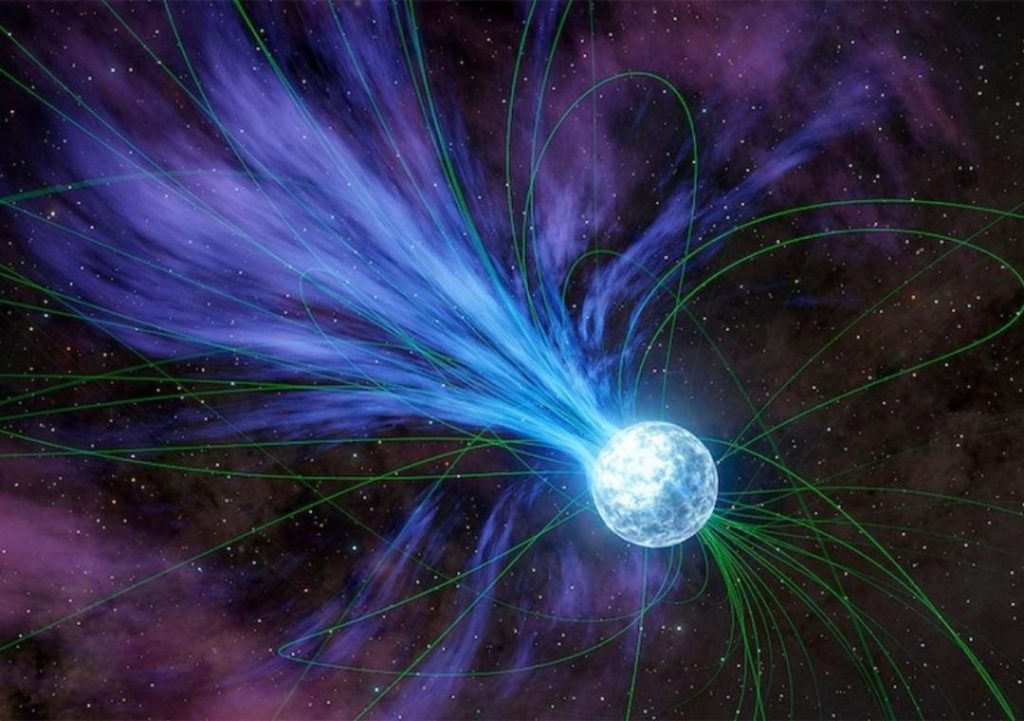
Title: Gold & Platinum Created through Neutron Stars’ Explosions: Study
For centuries, humans have been fascinated by the origins of precious metals like gold and platinum. While we’ve long known that these metals are found in small amounts in the Earth’s crust, the exact processes by which they were created have remained a mystery. Recently, a groundbreaking study led by Columbia University student Anirudh Patel has shed new light on the origins of these precious metals, revealing that they were formed through the explosions of magnetars, or highly magnetized neutron stars.
According to the study, magnetars are incredibly powerful cosmic objects that are capable of releasing massive amounts of energy in the form of flares. These flares can be so powerful that they can be detected from millions of light-years away, and they are thought to be responsible for creating many of the elements found in the universe, including gold and platinum.
The study, which was published in the journal Nature, used data from NASA’s Fermi Gamma-Ray Space Telescope to analyze the properties of magnetars and their flares. By studying the properties of these objects, the researchers were able to determine that the flares released by magnetars are capable of creating many of the elements found in the universe, including gold and platinum.
But how exactly do magnetars create these elements? The process is thought to occur through a series of complex nuclear reactions that take place in the intense magnetic fields surrounding the magnetar. These reactions involve the capture of high-energy particles, such as protons and neutrons, by the magnetar’s magnetic field, which causes them to collide and fuse together to form new elements.
The study suggests that this process occurs in two stages. In the first stage, the magnetar’s magnetic field captures high-energy particles and accelerates them to incredibly high speeds. In the second stage, these particles collide and fuse together to form new elements, including gold and platinum.
The researchers used computer simulations to model the process by which magnetars create these elements, and their results are consistent with the properties of the elements found in the universe. For example, they found that the abundance of certain elements, such as gold and platinum, is consistent with the predictions of their model.
But what does this mean for our understanding of the origins of gold and platinum? According to the study, the explosions of magnetars are thought to be responsible for creating many of the elements found in the universe, including gold and platinum. This means that these precious metals were likely formed through a series of cosmic events, including the explosions of magnetars and the subsequent formation of new elements.
This understanding of the origins of gold and platinum is not only fascinating from a scientific perspective, but it also has important implications for our understanding of the universe as a whole. For example, it suggests that the elements found in the universe are not just randomly distributed, but were instead created through a series of complex cosmic processes.
The study’s findings also have important implications for the search for extraterrestrial life. If we can identify the elements found in the universe as being created through the explosions of magnetars, it may be possible to use this information to search for signs of life elsewhere in the universe.
In conclusion, the study led by Columbia University student Anirudh Patel has shed new light on the origins of gold and platinum, revealing that they were created through the explosions of magnetars, or highly magnetized neutron stars. This understanding of the origins of these precious metals has important implications for our understanding of the universe as a whole, and may even have implications for the search for extraterrestrial life.






